The War of the Spanish Succession was one of the defining events of the Versailles Century (1682-1789). Today on the blog we’ll examine the background of the conflict.
In the late 1690s, Europe was preoccupied by the question of who was to succeed Spain’s childless king, Carlos II, who was feeble of both mind and body. Still only in his 30s, he was nonetheless thought to be on his last legs. Unfortunately for him, his house, the Spanish branch of the Habsburgs, was the most inbred dynasty in the history of Europe. His own parents, for instance, were uncle and niece. The most visible outcome of this inbreeding in Carlos II was his deformed jaw, which made it difficult for him to speak and eat.
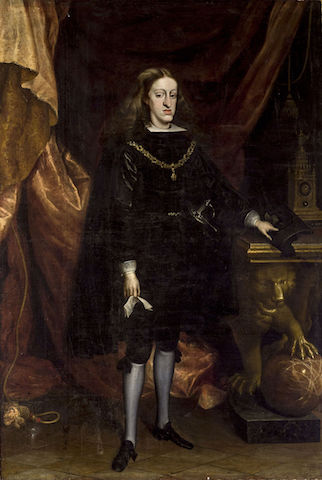
Charles II of Spain (1661-1700). Credit: Wikipedia.
He married twice. His first wife was a Frenchwoman, Marie-Louise d’Orléans, a daughter of Louis XIV’s brother, the Duke of Orleans, known as ‘Monsieur.’ He was very attached to her, but they had no children and she died young. He then married a relation of the Elector of Bavaria, Maria Anna of Neuburg, whose sister was already married, as his third wife, to the head of the Austrian branch of the Habsburgs, the Holy Roman Emperor Leopold. Unsurprisingly, given Carlos II’s general ill health and his disabilities — his autopsy later revealed that he had only one testicle, which was atrophied — this marriage also remained childless. What to do? The logical choice was to choose an heir from among his closest living relations, the descendants of his 2 deceased older sisters.
The elder sister, Marie-Thérèse (Maria Teresa), had been married off to Louis XIV of France. She had renounced her claim to the Spanish crown in exchange for an enormous dowry, but it was never paid. Louis, therefore, took the view that her claim was still valid. Marie-Thérèse died in 1683 and her claim passed to her only surviving child, the Dauphin (Crown Prince) Louis, who in turn had 3 sons: Louis, Duke of Burgundy (Bourgogne), Philip, Duke of Anjou, and Charles, Duke of Berri.
The younger sister, Margarita Teresa, who died in 1673, had been the first wife of the above-mentioned Emperor Leopold. Unlike her older sister, she was not made to renounce her claim to the Spanish crown on her marriage. Dead at just 20, she left only one surviving child. This was the Archduchess Maria Antonia, who married the Elector of Bavaria. Tragically, she died in 1692 of complications from giving birth to her only child, Joseph Ferdinand of Bavaria.
Given Marie-Thérèse’s renunciation of her rights to the Spanish crown, the baby Bavarian prince, as Carlos II’s grandnephew through Margarita Teresa, who had never renounced her claim, had the best legal claim to be Carlos II’s heir. Louis XIV was tempted to press his son’s claim, but he had already fought a major war in every decade of his reign, and was not keen to start another. He agreed to recognize little Joseph Ferdinand of Bavaria as Carlos II’s heir in exchange for some territorial concessions. The boy was formally declared Prince of Asturias, the title traditionally held by the heir to the Spanish crown, in a treaty agreed by Spain, France, Bavaria, and Austria, and Europe heaved a collective sigh of relief.
The stakes were huge. Spain’s empire was truly vast at this time. Not only did it include peninsular Spain and its colonies in northern Africa, the Americas, and the Pacific, it also encompassed Sicily, Naples, Sardinia, the duchy of Milan, and the Spanish Netherlands, which we now know as Belgium. For the peace of Europe, Joseph Ferdinand of Bavaria was an ideal candidate for Spain’s crown. None of the other countries wanted to see the Spanish empire fall under the exclusive control of either Austria or France. If it were not for Joseph Ferdinand, the rich pickings would inevitably cause a war.
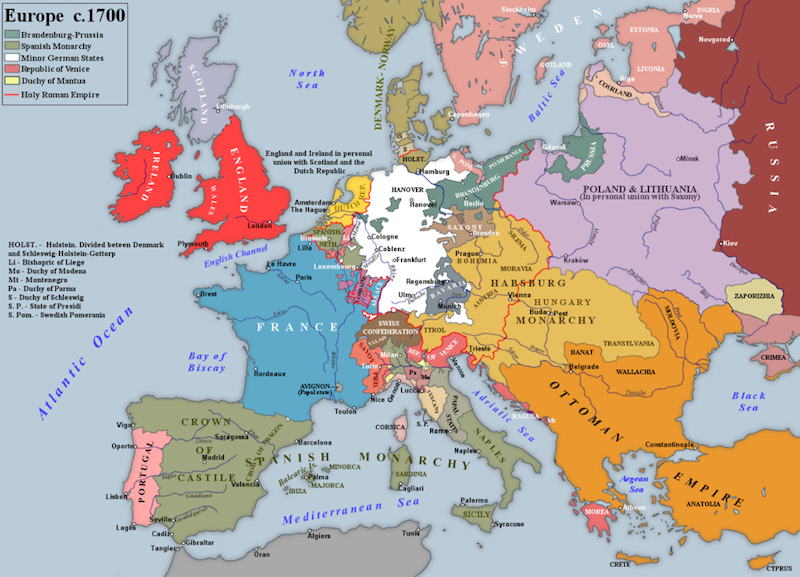
Europe in 1700. Credit: Wikipedia.
To Europe’s consternation, young Joseph Ferdinand fell ill and died at the beginning of 1699. Some believed he was poisoned by Austrian agents.
This death left Carlos II, his advisors, and the statesmen of Europe in a quandary. If Marie-Thérèse’s renunciation was valid, her descendants were ruled out of the Spanish succession, thus leaving the Austrian Habsburgs as Carlos II’s heirs due to their common descent from Carlos I of Spain (1500-1558), a Habsburg who had also been Holy Roman Emperor as Charles V. (Note: Carlos I/Charles V had divided his globe-spanning empire, leaving Spain and its possessions to his son, Felipe II, while his brother Ferdinand received the imperial crown, Austria, Bohemia, Hungary and the other eastern territories of the Habsburgs.) Apart from themselves, however, no one in Europe would be happy to see the Austrian Habsburgs rejoin their already large empire with their Spanish cousin’s even bigger one. On the other hand, if Marie-Thérèse’s renunciation was not valid, and Louis XIV enforced his son’s claim, France and Spain would eventually be united under a single ruler. This prospect was no more appealing to the other nations of Europe than the reconstitution of the Spanish-Austrian Habsburg empire. Throughout 1699 and into 1700, the great question that preoccupied European diplomacy and espionage was what Louis XIV would do.
That question became acute when Carlos II died on 1 November, 1700. In his will, he left instructions that the crown should be offered to Louis XIV’s second grandson, Philip, Duke of Anjou. This was a clever move because it left Louis XIV and Marie-Thérèse’s son and first grandson in place as heirs to the French crown. The instructions further specified that if Philip rejected the offer, it should be passed on to the third grandson, Charles, Duke of Berri. If neither accepted, the offer was to go to the Emperor Leopold’s second son, the Archduke Charles. Of course, the two boys, Philip of Anjou and Charles of Berri, respectively aged 16 and 13, were not actually going to choose for themselves. The decision rested with their grandfather, Louis XIV.
On 16 November, 1699, Louis XIV made the fateful decision to accept the offer on behalf of Philip of Anjou. The teenager was promptly proclaimed Felipe V of Spain in the presence of the Spanish ambassador and the assembled French court at Versailles.
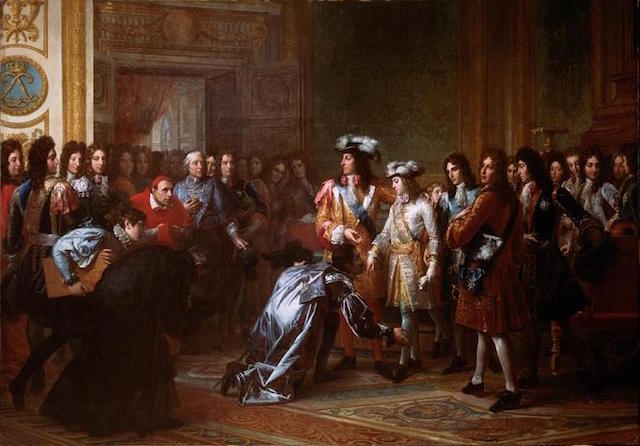
Philippe d’Anjou is proclaimed Felipe V of Spain at Versailles while the Spanish ambassador kneels before him. Credit: Wikipedia.
Within months, Austria counter-proclaimed the Archduke Charles as Carlos III. The other countries scrambled to take sides and the War of the Spanish Succession was underway.
In the next instalment of this series on the War of the Spanish Succession, I will present an interesting document. The excellent French-language digital journal Gazette d’Esprit XVIII recently published a letter of advice from Louis XIV to his grandson Felipe V, King of Spain. I will translate the letter and add appropriate notes.
Please check back in a day or two!







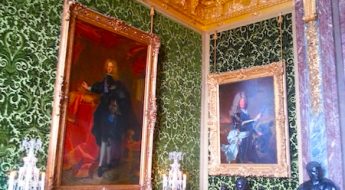

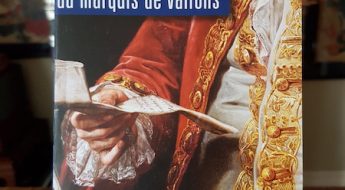








Leave a Comment